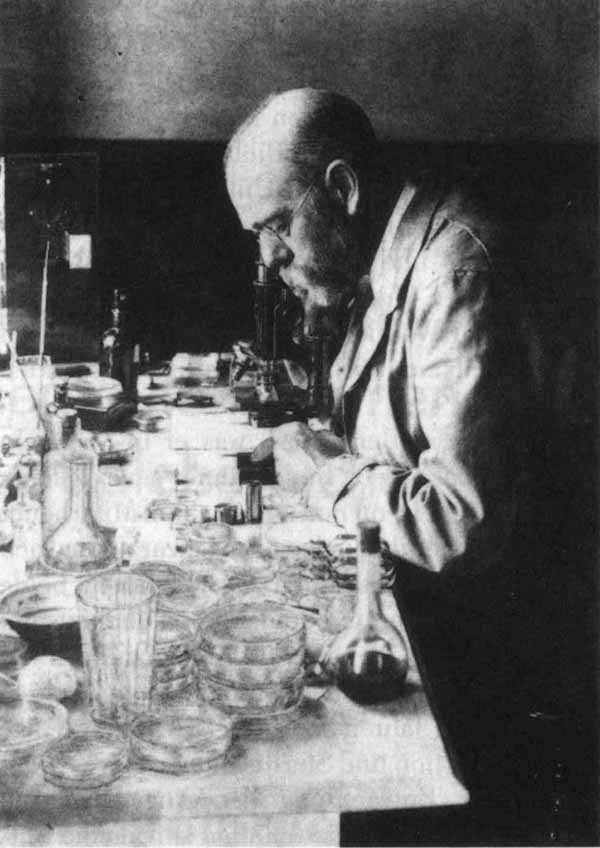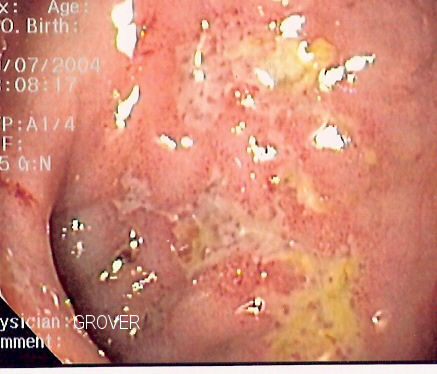 The fundamental principle of infectious disease is Koch'sPostulate. To be brief, he set forth the qualifications that must be fulfilled in order to associate a pathogen with an illness. This includes the isolation of the organism from diseased tissue, the ability to grow the organism in pure culture, and the recreation of the disease in a healthy individual following introduction of the purified organism.
The fundamental principle of infectious disease is Koch'sPostulate. To be brief, he set forth the qualifications that must be fulfilled in order to associate a pathogen with an illness. This includes the isolation of the organism from diseased tissue, the ability to grow the organism in pure culture, and the recreation of the disease in a healthy individual following introduction of the purified organism.This procedure was used at the time to demonstrate Mycobacterium tuberculosis as the causative agent of consumption. Although to be sure, Koch's Postulate does run into some trouble with organisms such as M. leprae which can not be grown ex vivo. (More on M. leprae's reductive genome found here)
It is only fitting that a modern day example of pathogen associated disease is that of another mycobacteria, the intracellular pathogen M. avium paratuberculosis (MAP) and its potential to be a causative agent of Crohn's Disease.
Crohn's Disease is a severe inflammatory bowel syndrome, characterized by inflammation in discrete sections of intenstinal tissue seperated by healthy tissue. Affecting over half a million people in our country (CDC 2001), this chronic illness has no known cure. Treatments include anti-inflammatory drugs, and tellingly, the anti-mycobacterial rifampicin.
A recent study from the University of Otago in New Zealand has shown a strong correlation between the presence of MAP and Crohn's Disease. Using a PCR detection method, they amplified a region specific to MAP, the IS900 element, from white bloodcells of both Crohn's patients and non-affected individuals. The PCR screen is sensitive enough to detect 100 cells/mL of blood. Furthermore, this study is currently the largest of it's kind, examining samples from over 350 affected individuals and 200 controls. Past studies have only looked at groups of around 50 individuals.

Owing to the larger number of samples, this study lends itself to a more detailed statistical analysis. Firstly they found that 122 of the 361 individuals (33.8%) affected by Crohn's were postive for MAP. On the otherhand, 43 of the 200 control samples (21.5%) were also MAP positive.
In my humble opinion, this does not seem significant. However, the author's statistical analysis shows otherwise. They show with a 95% confidence interval and a 0.002 p-value, that MAP is closely associated with Crohn's Disease. A handful of other (smaller) studies have confirmed similar results. However, the conclusion remains controversial due to many other studies that have not found a correlation.
A close friend has said that this study reminds him of the Heliobacter pylori and stomach ulcer story (of Nobel Prize winning proportions). However, a fundamental difference between that story and this one, is that we have yet to show that a pure culture of MAP is capable of inducing pathology in an individual. (Although it is the causative agent of a bovine inflammatory bowel syndrome)
***Revision 17 Oct 2008: An astute reader pointed out that Dr. Rod Chiodini has already fulfilled Koch's Postulates for MAP-induced Crohn's Disease. A little digging found the article: Dig Dis Sci. 1986 Dec;31(12):1351-60. MAP from Crohn's patients was isolated and used to induce the bowel disease in goats! ***
It is my belief that we will find that MAP is not the sole agent of Crohn's, but is likely an instigator for many individuals who are genetically pre-disposed to inflammatory disease. We are peeling back more knowledge each day that demonstrates that disease isn't as simple as an invading pathogen. Stochasticity and host response must be taken into account when determining the cause of disease.
Source:
Bentley, R., Keenan, J., Gearry, R., Kennedy, M., Barclay, M., & Roberts, R. (2008). Incidence of Mycobacterium avium Subspecies paratuberculosis in a Population-Based Cohort of Patients With Crohn's Disease and Control Subjects The American Journal of Gastroenterology, 103 (5), 1168-1172 DOI: 10.1111/j.1572-0241.2007.01742.x
Other articles of interest:
Reductive Evolution in Mycobacterium leprae
A Brief Bit More on Reductive Evolution in M. leprae


